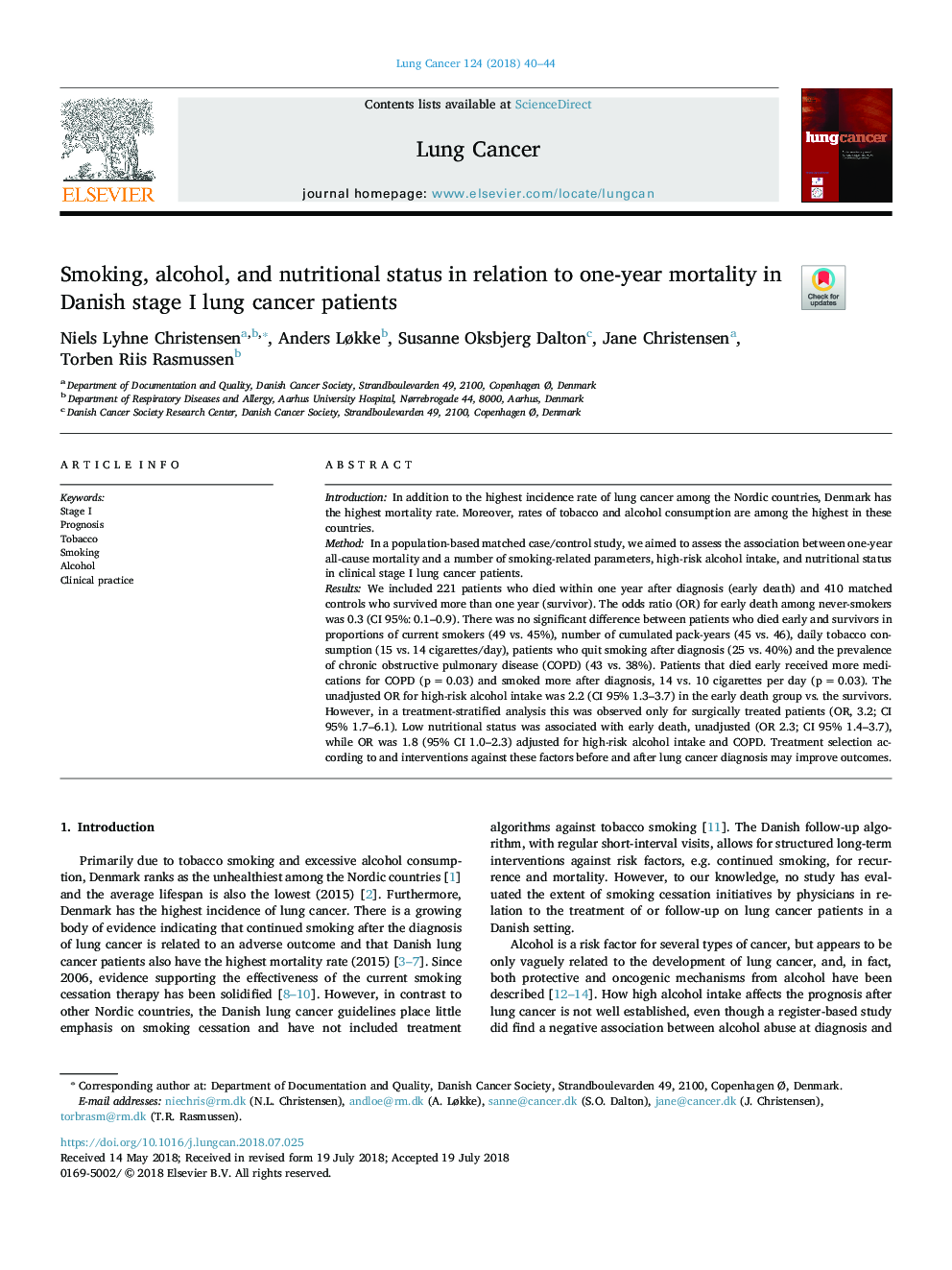| Article ID | Journal | Published Year | Pages | File Type |
|---|---|---|---|---|
| 8453570 | Lung Cancer | 2018 | 5 Pages |
Abstract
We included 221 patients who died within one year after diagnosis (early death) and 410 matched controls who survived more than one year (survivor). The odds ratio (OR) for early death among never-smokers was 0.3 (CI 95%: 0.1-0.9). There was no significant difference between patients who died early and survivors in proportions of current smokers (49 vs. 45%), number of cumulated pack-years (45 vs. 46), daily tobacco consumption (15 vs. 14 cigarettes/day), patients who quit smoking after diagnosis (25 vs. 40%) and the prevalence of chronic obstructive pulmonary disease (COPD) (43 vs. 38%). Patients that died early received more medications for COPD (pâ=â0.03) and smoked more after diagnosis, 14 vs. 10 cigarettes per day (pâ=â0.03). The unadjusted OR for high-risk alcohol intake was 2.2 (CI 95% 1.3-3.7) in the early death group vs. the survivors. However, in a treatment-stratified analysis this was observed only for surgically treated patients (OR, 3.2; CI 95% 1.7-6.1). Low nutritional status was associated with early death, unadjusted (OR 2.3; CI 95% 1.4-3.7), while OR was 1.8 (95% CI 1.0-2.3) adjusted for high-risk alcohol intake and COPD. Treatment selection according to and interventions against these factors before and after lung cancer diagnosis may improve outcomes.
Related Topics
Life Sciences
Biochemistry, Genetics and Molecular Biology
Cancer Research
Authors
Niels Lyhne Christensen, Anders Løkke, Susanne Oksbjerg Dalton, Jane Christensen, Torben Riis Rasmussen,
